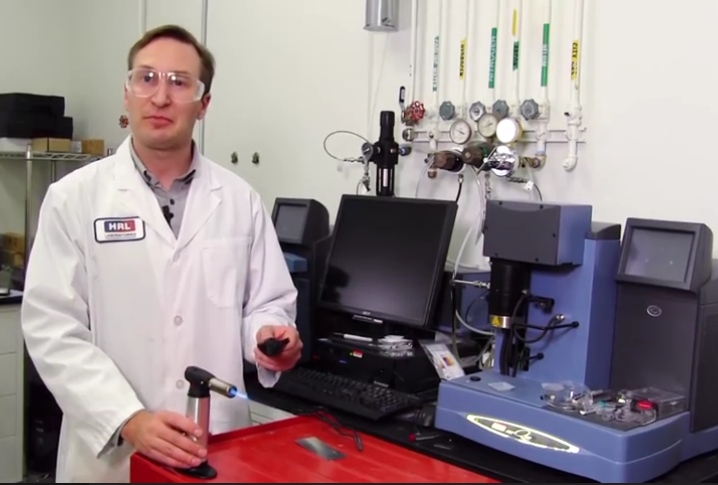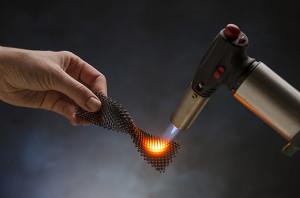Groundbreaking Ceramic Resin Developed by HRL Laboratories Has Potential to 3D Print Hypersonic Jets
![]() 3D printed ceramics are still something of a rarity, compared to other materials. The material has several limitations; it’s generally printed by sintering powder materials that result in porous, relatively weak end products with low heat resistance. This greatly limits the size and shape of objects that can be printed; 3D printed ceramic objects have thus far been pretty much limited to relatively small decorative items or tableware. But that’s all about to change, thanks to a new material developed by research and development company HRL Laboratories, LLC.
3D printed ceramics are still something of a rarity, compared to other materials. The material has several limitations; it’s generally printed by sintering powder materials that result in porous, relatively weak end products with low heat resistance. This greatly limits the size and shape of objects that can be printed; 3D printed ceramic objects have thus far been pretty much limited to relatively small decorative items or tableware. But that’s all about to change, thanks to a new material developed by research and development company HRL Laboratories, LLC.
 HRL, which is owned by Boeing and General Motors, has developed a ceramic resin that can be printed through stereolithography. The company actually calls it a “pre-ceramic” resin that prints like a typical plastic resin, and is then fired in a high temperature kiln, which turns it into a dense ceramic. The resulting objects are about ten times stronger than other 3D printed ceramics, have virtually no porosity, and can withstand temperatures higher than 1700°C.
HRL, which is owned by Boeing and General Motors, has developed a ceramic resin that can be printed through stereolithography. The company actually calls it a “pre-ceramic” resin that prints like a typical plastic resin, and is then fired in a high temperature kiln, which turns it into a dense ceramic. The resulting objects are about ten times stronger than other 3D printed ceramics, have virtually no porosity, and can withstand temperatures higher than 1700°C.
“With our new 3D printing process we can take full advantage of the many desirable properties of this silicon oxycarbide ceramic, including high hardness, strength and temperature capability as well as resistance to abrasion and corrosion,” said program manager Dr. Tobias Schaedler.
The first tests of the new material mark the first time that silicon carbide ceramics have ever been 3D printed. The company believes that the material, which was created by Senior Chemical Engineer Zak Eckel and Senior Chemist Dr. Chaoyin Zhou, can also be altered to produce a multitude of ceramics by adjusting the makeup of the resin. The implications are significant for a number of industries; HRL states that the new resin could be used for a number of applications, from aerospace to electronics.
Traditional ceramics have been used in aerospace manufacturing for a long time; they’re ideal because of their light weight, and high strength and resistance to heat. 3D printed ceramics are lacking in those qualities, but now that HRL has found a way to circumvent those limitations, the door has been opened for the use of 3D printed ceramic in jet engines and even the entire bodies of jets. This could be instrumental in the manufacture of hypersonic jets that can travel from the US to Japan in just a few hours.
The material can also be produced through self-propagating photopolymer waveguide prototyping, which HRL developed for metal in 2011, and which resulted in the world’s lightest structural material. The process is also extremely fast, producing parts in a matter of seconds or minutes. 3D printing, however, enables a geometrical flexibility that no other ceramic manufacturing process has been capable of so far. Despite the appeal of traditionally manufactured ceramics – strength, heat resistance, etc. – they’re still difficult to machine or cast, limiting their possible sizes and shapes. Like we’ve seen with other materials such as metals, 3D printed ceramics can be manufactured in any shape or size, which is why they have such exciting potential for the aerospace industry.“If you go very fast, about 10 times speed of sound within the atmosphere, then any vehicle will heat up tremendously because of air friction,” said Dr. Schaedler. “People want to build hypersonic vehicles and you need ceramics for the whole shell of the vehicle.”
In addition to printing large components such as jet engines, HRL expects that the ceramic resin can also be used for tiny, complex applications like microelectromechanical systems and electronic device packaging. If you’d like to read the full research paper HRL has published on the material, you can do so in Science Magazine. HRL is also looking for a commercialization partner for the material; if you’re interested, you can email innovation@hrl.com. Let’s hear your thoughts on the future of this new type of resin in the Ceramic Resin forum on 3DPB.com.
Subscribe to Our Email Newsletter
Stay up-to-date on all the latest news from the 3D printing industry and receive information and offers from third party vendors.
You May Also Like
3D Printing Unpeeled: New Arkema Material for HP, Saddle and Macro MEMS
A new Arkema material for MJF is said to reduce costs per part by up to 25% and have an 85% reusability ratio. HP 3D HR PA 12 S has been...
3D Printing News Briefs, January 20, 2024: FDM, LPBF, Underwater 3D Printer, Racing, & More
We’re starting off with a process certification in today’s 3D Printing News Briefs, and then moving on to research about solute trapping, laser powder bed fusion, and then moving on...
3D Printing Webinar and Event Roundup: December 3, 2023
We’ve got plenty of events and webinars coming up for you this week! Quickparts is having a Manufacturing Roadshow, America Makes is holding a Member Town Hall, Stratafest makes two...
Formnext 2023 Day Three: Slam Dunk
I’m high—high on trade show. I’ve met numerous new faces and reconnected with old friends, creating an absolutely wonderful atmosphere. The excitement is palpable over several emerging developments. The high...

































